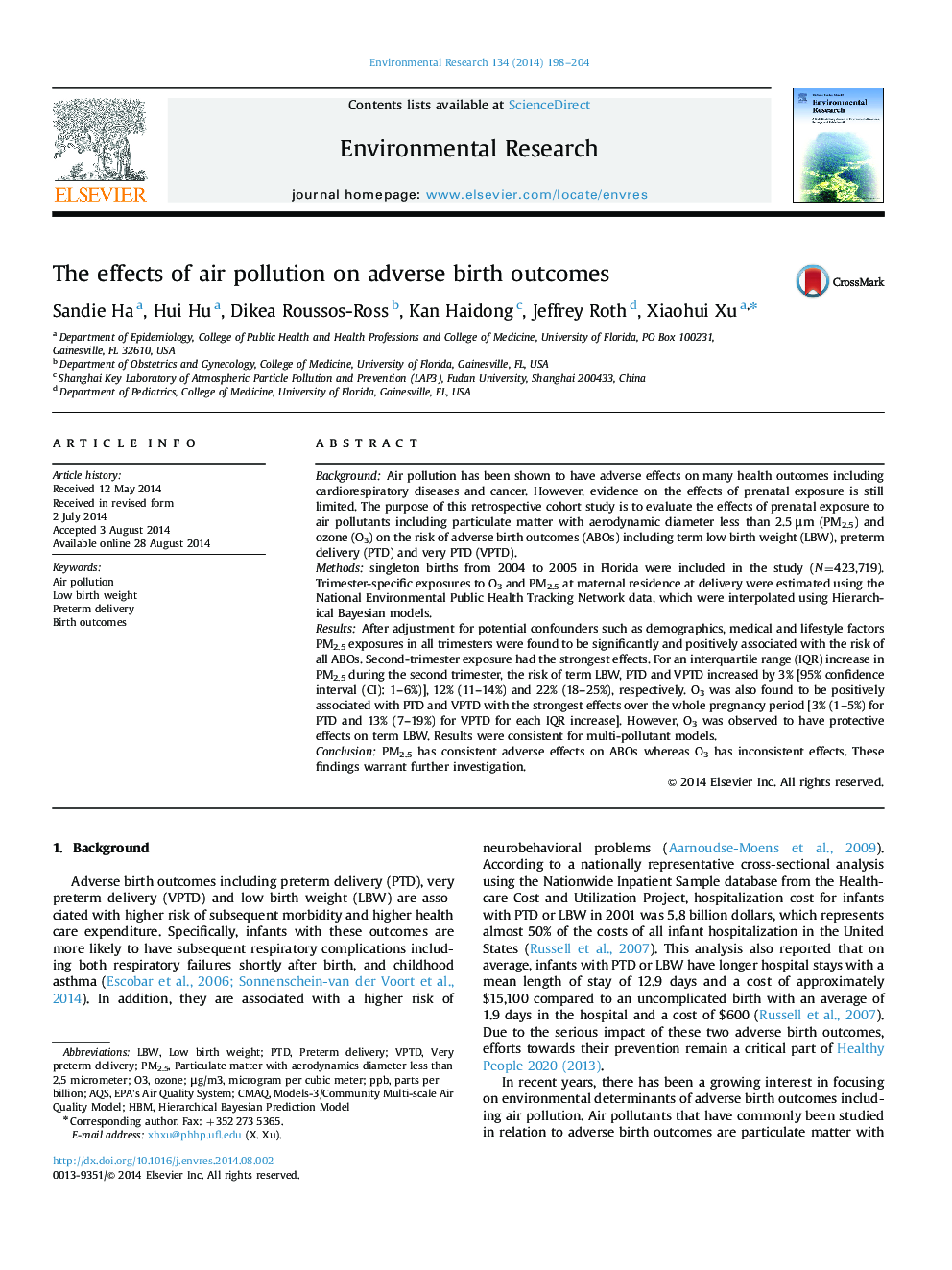| کد مقاله | کد نشریه | سال انتشار | مقاله انگلیسی | نسخه تمام متن |
|---|---|---|---|---|
| 6352470 | 1622567 | 2014 | 7 صفحه PDF | دانلود رایگان |
- Prenatal exposure to PM2.5 may increase the risk of term LBW, PTD and VPTD.
- The effects of PM2.5 on ABOs are strongest during the second trimester.
- Prenatal O3 exposure may increase the risk of PTD and VPTD.
- The protective association between O3 and term LBW needs further investigation.
BackgroundAir pollution has been shown to have adverse effects on many health outcomes including cardiorespiratory diseases and cancer. However, evidence on the effects of prenatal exposure is still limited. The purpose of this retrospective cohort study is to evaluate the effects of prenatal exposure to air pollutants including particulate matter with aerodynamic diameter less than 2.5 μm (PM2.5) and ozone (O3) on the risk of adverse birth outcomes (ABOs) including term low birth weight (LBW), preterm delivery (PTD) and very PTD (VPTD).Methodssingleton births from 2004 to 2005 in Florida were included in the study (N=423,719). Trimester-specific exposures to O3 and PM2.5 at maternal residence at delivery were estimated using the National Environmental Public Health Tracking Network data, which were interpolated using Hierarchical Bayesian models.ResultsAfter adjustment for potential confounders such as demographics, medical and lifestyle factors PM2.5 exposures in all trimesters were found to be significantly and positively associated with the risk of all ABOs. Second-trimester exposure had the strongest effects. For an interquartile range (IQR) increase in PM2.5 during the second trimester, the risk of term LBW, PTD and VPTD increased by 3% [95% confidence interval (CI): 1-6%)], 12% (11-14%) and 22% (18-25%), respectively. O3 was also found to be positively associated with PTD and VPTD with the strongest effects over the whole pregnancy period [3% (1-5%) for PTD and 13% (7-19%) for VPTD for each IQR increase]. However, O3 was observed to have protective effects on term LBW. Results were consistent for multi-pollutant models.ConclusionPM2.5 has consistent adverse effects on ABOs whereas O3 has inconsistent effects. These findings warrant further investigation.
Journal: Environmental Research - Volume 134, October 2014, Pages 198-204
